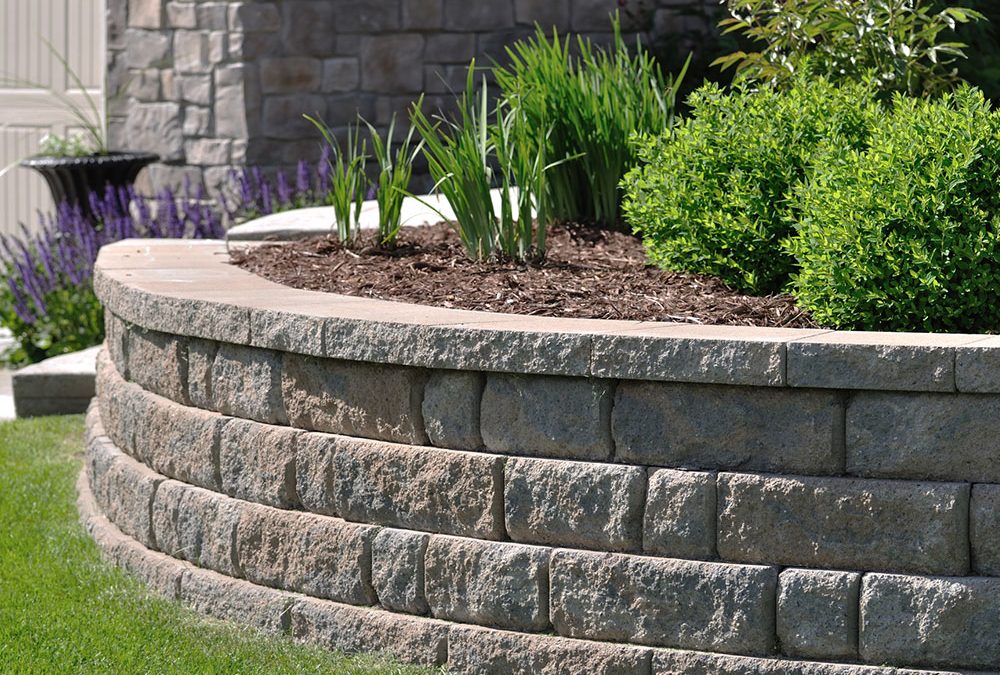

Brick: When used, brick is a fascia on retaining walls for appearance.Stone: Stone is sometimes used for retaining walls in areas where it is plentiful by slant stacking, using the specific gravity of the stone to retain earth.The cinder blocks are then stacked on continuous concrete footings using grouted cells and reinforcing for structural strength. Cinder Blocks: Volcanic aggregate, cement powder and water formed into a hollow block.The concrete blocks are then stacked on continuous concrete footings using grouted cells and reinforcing for structural strength. Concrete Blocks: Small rock aggregate, cement powder and water formed into a hollow block.Steel reinforcement and concrete are the ultimate materials for building retaining walls. Concrete: Aggregate, cement powder and water designed for the engineered mix desired.The AFTEC Precast Concrete Retaining Wall ensures that pressure can be held behind its steel-reinforced three to eight-foot walls. Regardless of the method used, the most important aspect of retaining walls is proper design and installation. Cantilevered retaining walls require much less material than gravity walls. Such walls need rigid concrete footing constructed beneath seasonal frost depth. These short wing walls are added at right angles to the main concrete retaining wall. Using structural footing, these walls convert horizontal pressures from behind the wall to vertical pressures on the ground below.Ĭantilever walls may be buttressed to improve their strength against pressure. Tall sheet piled walls need a tie-back anchor “dead-man” in the soil.Ĭantilevered concrete retaining walls are made from steel-reinforced precast concrete or wet masonry. Manufactured from steel, vinyl, fiberglass, plastic planks or wooden planks, sheet piled walls must be pounded at least two-thirds the height of the wall into the ground. While generally the last option for concrete retaining walls, sheet piled walls are most effective for soft soils and extremely tight areas. They are also often reinforced with steel to improve the lifespan of the retaining wall. Due to their congruence in nature and their large concrete block size, concrete block walls can be built faster than brick retaining walls. The main drawback from brick masonry walls is that brick has a short lifespan and absorbs large amounts of water.īlock masonry retaining walls are also built to a specified size and weight.

Using such units, a masonry wall can have equal resistance at all points on the structure.īrick masonry concrete retaining walls use standard 8” x 4” x 2.25” size kiln-fired bricks and mortar. A masonry unit is generally a compressed earth block that is formed to be a specific size and weight.

Masonry retaining walls mean that masonry units (CMU block walls) are utilized to construct the wall. When block is used, such as building brick or block concrete walls, the structure is considered a masonry concrete retaining wall. Fortification is often used internally and includes timber, soil, steel or polymer mesh reinforcement. These walls are built taller and stronger by including reinforcement and rigid-footing applications. Short gravity concrete retaining walls use dry-stacked stone retainers with a batter, which enables the wall to lean back toward the retained element.For larger needs, precast concrete, geosynthetics, gabions, crib walls or soil-nailed walls can be used for retaining. These walls use the concrete wall weight to resist pressure from the opposing side. Gravity concrete retaining walls are constructed using large boulders or masses of precast concrete.


 0 kommentar(er)
0 kommentar(er)
